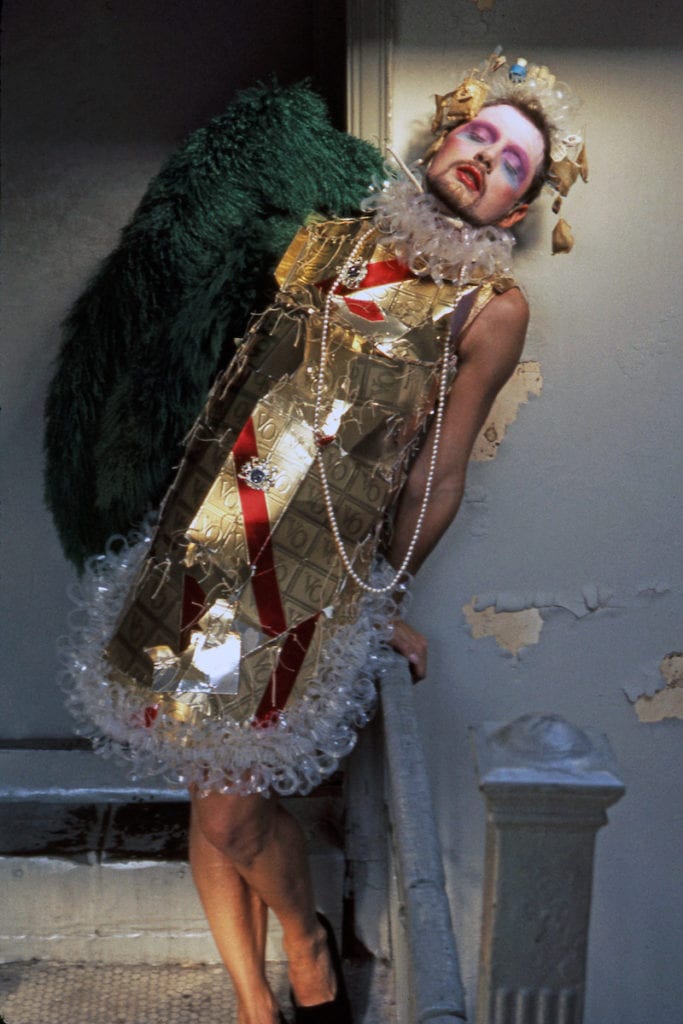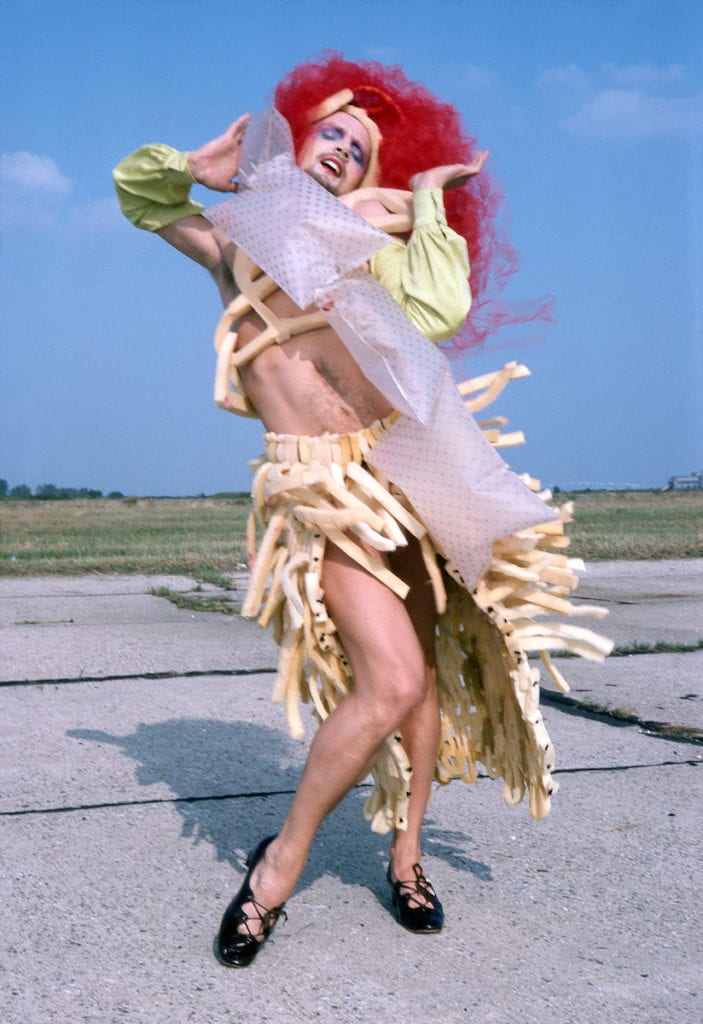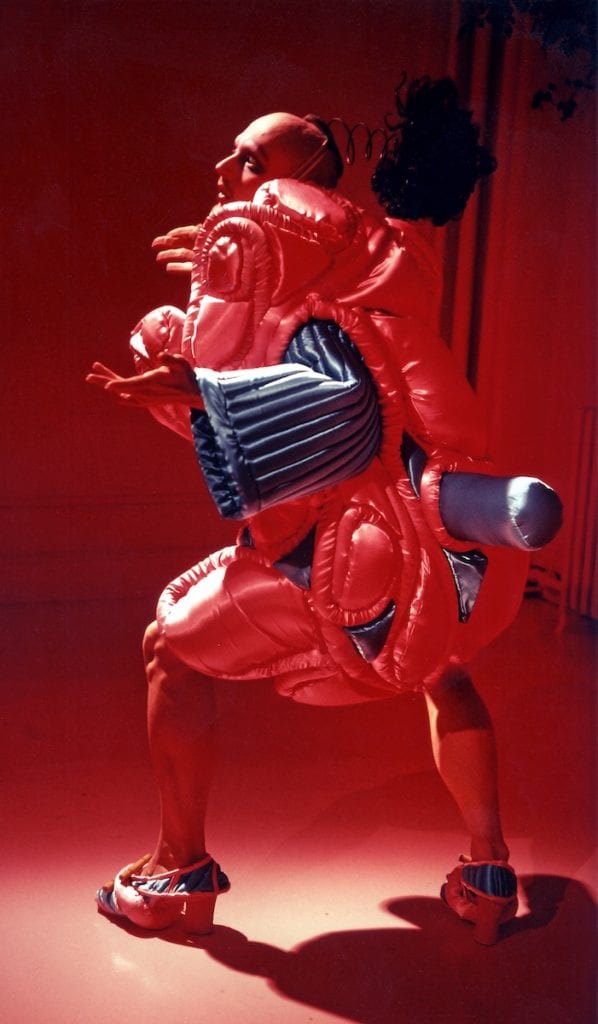Greg Day initially trained as an anthropologist at Rutgers University, about an hour south of New York City. The photographer completed his field research among the Gullah people, a sweetgrass basket-making community, on the South Carolina coast. As part of his research, Day photographed the group, and the camera became a welcome part of their everyday life.
However, this was not a straightforward photographer-subject relationship. Day subverted that dynamic. “In my art process, the subject, not the photographer, directs the shoot,” explains Day, whose practice mirrors ‘participant observation’ — a methodology employed by cultural anthropologists to gain an in-depth understanding of a community by immersing themselves in their daily lives over an extended period. The camera, and Day’s position as a photographer behind that camera, naturally disrupted this approach. But, the photographer was able to build a level of trust and rapport with his subjects.
The experience equipped Day for his next chapter, moving to the counter-cultural haven of Greenwich Village in downtown Manhattan, where he knew no one. Stories of the area’s thriving artistic community captivated the photographer: “One of my interests is other artists, especially communities of artists,” explains Day, drawing a parallel between the Village and the Gullah community he had inhabited before. This was 1970s New York: the fiscal crisis was in full swing but it had also brought down rents for artists. The Stonewall riots of 1969 had sparked the burgeoning gay liberation movement; Andy Warhol’s Factory was still in its heyday, and AIDs had not yet ravaged the city. The environment of Greenwich Village provided a safe space in which Day could also explore his own identity. “I was evolving,” he says, “coming out, you could say, slowly, as a gay man”.

One night, Day was at a bar in the Village, and so was performance artist Stephen Varble — “dressed like one of the village people, like a cowboy”. The pair got along and Varble invited Day back to his apartment, which was filled with dresses constructed from unlikely materials. “I was slightly taken aback but he invited me to a performance he was doing that Saturday night in Sheridan Square, Greenwich Village,” recounts the photographer. “I went, and I was completely transformed by it — he deconstructed gender and that was very radical and controversial at the time.”
Day became Varble’s photographer and bodyguard — documenting the performance artist as he took to the streets of New York dressed in costumes forged from rubbish, food waste, and other found materials, and turning his lens on anyone who assaulted the artist during his performances — there were many. “He always performed where he was not invited; if he was invited he was not interested,” says Day. Varble’s earliest performances saw him act out his experience of gender and deconstruct the conventional conception of it via the costumes he wore. The artist spoke about identifying as a woman in a man’s body before the term genderqueer had been coined and periodically adopted the alter ego Marie Debris.

In 1975 and 1976, Varble rose to infamy with his Costume Tours, in which the artist disrupted the commercial realm of New York’s art world, along with other shrines to capitalism. Gutter Art was also a significant performance that epitomised his commitment to exposing and problematising commercialisation. For this, Varble drove across the city in a limousine, stopping outside several institutions, including The Metropolitan Museum of Art, to wash dishes in the gutter.
“When Stephen performed, he performed to the camera,” says Day. “It was not simply me photographing him, it was a dance. We danced together with the camera.” Day approached Varble’s performances as he had the Gullah people of South Carolina, becoming part of the art as opposed to simply documenting it. With Varble and his circle, photography also took on a new significance. It provided a means of visualising a community “stigmatised for their gender nonconformity and sexual practice” — photography provided “the possibility for a new and more positive self-image and public validation”.

Day was arguably Varble’s most significant photographic collaborator, taking hundreds of images of the artist during his most prolific period as a public performer. His anthropological grounding allowed him to capture Varble’s performances in a way that another photographer could not. Day was part of the spectacles, not divorced from them. A sense of movement and immediacy permeates the images — they do not feel staged or static.
Varble died of AIDS-related complications in early 1984. His rejection of the art world and his progressive conception of gender saw him written out of performance art history, and it was not until recently that the significance of his work was acknowledged — first with an institutional retrospective at the Leslie-Lohman Museum of Art in New York in 2018, and more recently in The Gutter Art of Stephen Varble: Genderqueer Performance Art in the 1970s at the Horse Hospital, London. Day’s photographs have played a central role in Varble’s reappraisal: visual documents of spectacular and disruptive interventions that may have otherwise been lost to history. “The wonderful thing about this is that Stephen Varble’s time is now,” he says.
